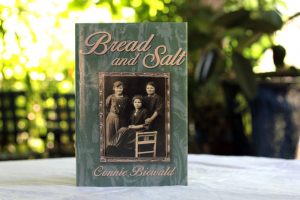
Bread and Salt
Bread and Salt is a novel about Sofie, Amalia, and Dora Bauer, three sisters growing up in the industrial Ruhr River Valley in Germany during World War I and the Weimar years. The bulk of the novel takes place in 1923-1924 when the girls are eighteen, seventeen and sixteen years old. It is the story of their relationship and the difficult choices they have to make to survive this tumultuous time and place. Throughout the book, fairy tales and fairy tale themes figure significantly.
During World War I when the girls are children, they are separated–sent to farms to be safer than they would be in the city and to replace men who are off fighting. After the war, during wild inflation and political unrest, they are reunited. They struggle to find their passions and places in the world, falling in love, and coping with their mother’s illness and death in the context of strikes, coups, and conflicts among political groups in the French and Belgian occupied Ruhrgebiet. The bond among them is powerful, but tested and stretched to the limit by the forces of history and the impact of difficult times.
